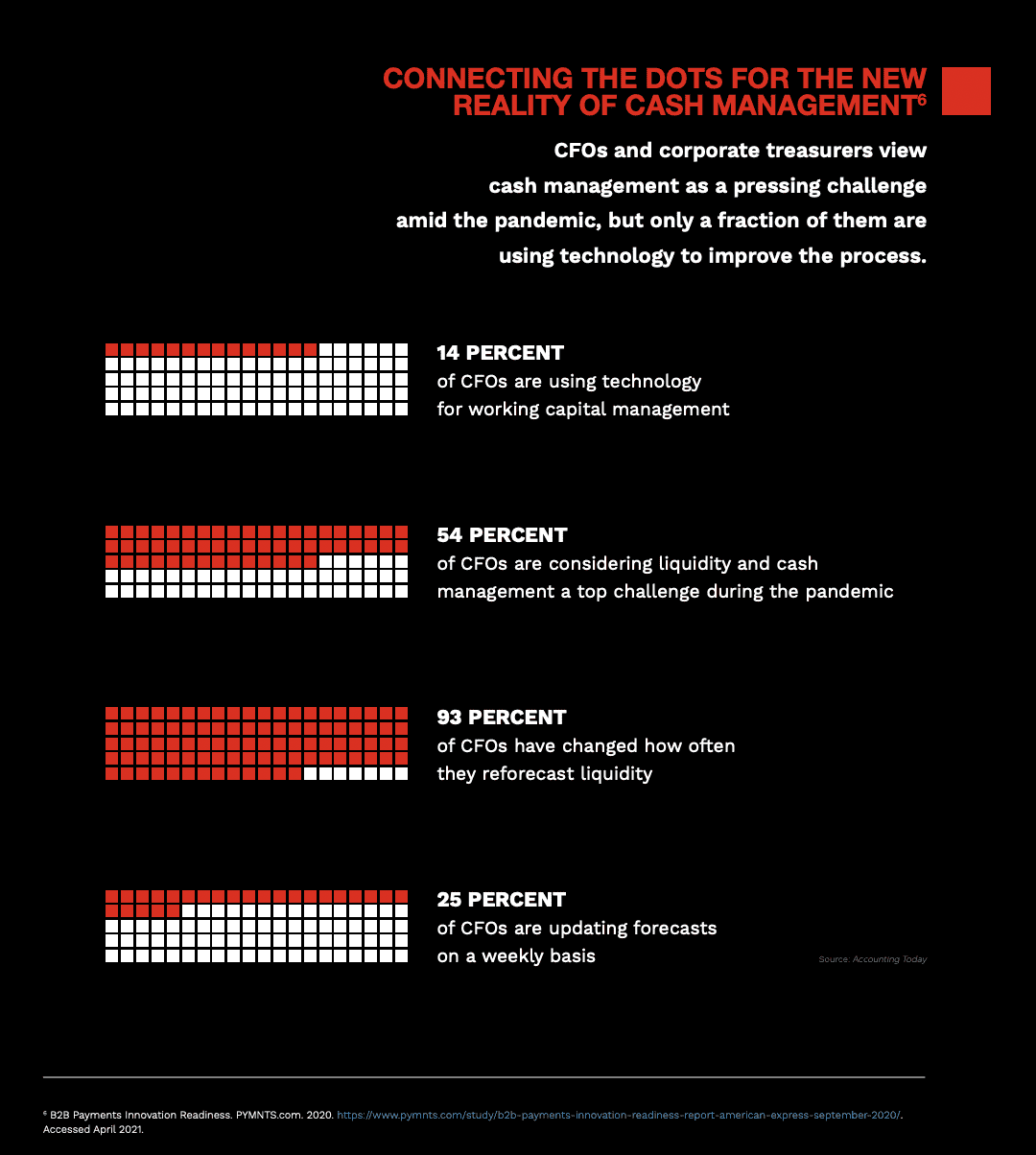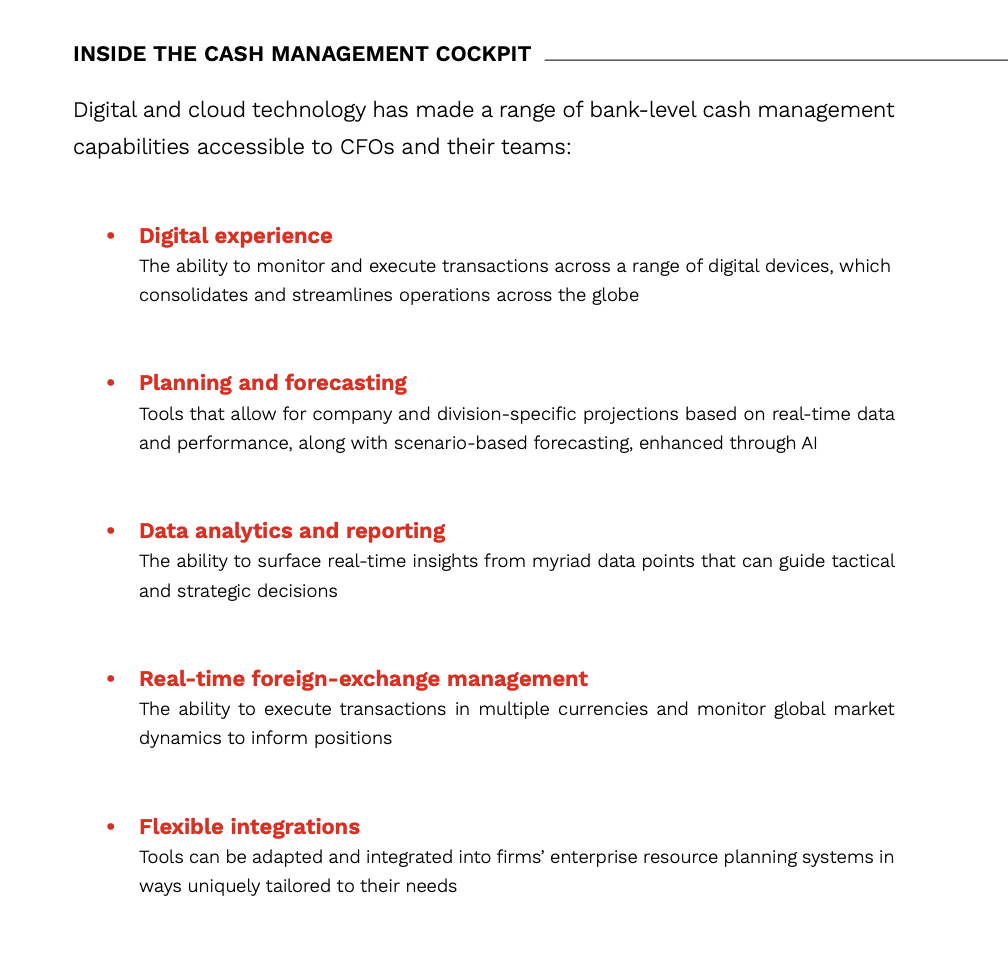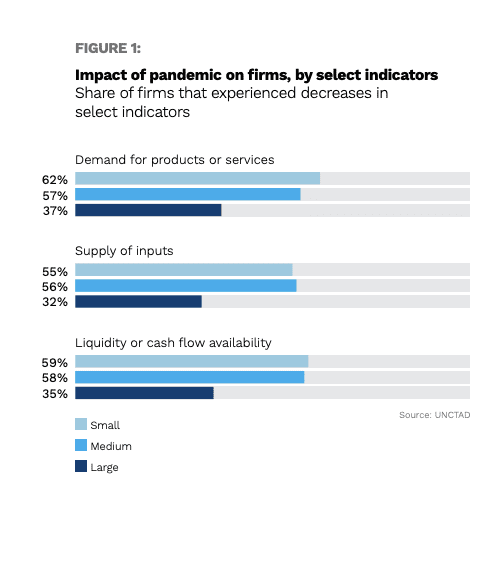
Heavy is the head responsible for treasury functions. And whether they’re banks or corporates, treasurers and CFOs are weary from juggling precarious new variables. They need solutions.
Help is coming — or rather, it’s here already— in the form of advanced cloud-based systems and the APIs that are connecting mobile apps to bank accounts, credit lines and cool features.
The Corporate Cash Management Playbook, a PYMNTS report done in collaboration with Red Hat, Finacle and Intel, examines demand for digital cash management solutions, noting that liquidity is the common enemy of large and small businesses alike in the economy.
Per the Playbook, “corporate leaders consider the pandemic and related uncertainty their top challenge, according to recent research, followed closely by overall economic uncertainty. Seventy-nine percent of executives cited the former factor, and 73 percent cited the latter — and, tellingly, treasury executives, those most actively involved in overseeing the movement of funds, were even more likely to cite these factors.”
It’s the same story on Main Street USA, with more than 75 percent of small brick-and-mortar operations in the U.S. experiencing cash flow shortages in 2020.
Technology is the way forward now, as safety, accuracy, speed and scale are becoming essential components in the payments value chain. Removing barriers to transformation in the treasury function is now taking center stage in the recovery, and developments are promising.

The Problem With Static Models
Solving cash management snags in a challenging economic climate requires admitting there’s a problem, but it seems many CFOs are still not confronting it. Noting that “less than 14 percent of CFOs are using digital technology for capital management” and that “as many as 91 percent of corporate treasurers have said they lack visibility into their operations,” the Corporate Cash Management Playbook zeroes in on forecasting as needing aid.
Forecasting is understandably beleaguered in 2021, and it will be modified as a result.
“One likely reason why forecasting has emerged as a particularly acute challenge is that finance executives have been accustomed to relying on static predictive variables such as past quarter performance and seasonal economic factors that fall short of providing real-time insight into their cash positions,” per the Playbook. “The pandemic has shed light on the pitfalls of using such static models. The widespread cash flow shortages that have emerged during the pandemic have made real-time visibility into cash positions more critical than ever. CFOs and corporate treasurers must now contend with a wide range of dynamic conditions and possibilities, such as a trusted supplier going out of business or international freight companies greatly increasing their rates due to high demand.”
In response, the Playbook notes that “more than two-thirds of treasury officials plan to increase their investment in digital technology in such areas as real-time treasury, AI-assisted security and predictive analysis.”
 Cloud-Connected APIs Affording Better Clarity Into Cash
Cloud-Connected APIs Affording Better Clarity Into Cash
And that coveted visibility into cash positions is happening now in the cloud. According to the new Corporate Cash Management Playbook, “Technological advances in recent years — specifically in cloud computing and APIs — have given rise to a new generation of financial management tools that can effectively leapfrog once-daunting technical hurdles. The pandemic has spotlighted the value of these innovations in keeping funds flowing at a time when finance teams are working remotely, holding the potential to bring new levels of visibility and control over company funds.”
With risk in a heightened state for the past year and still malingering, cloud migrations are looking less like an option and more like an inevitability for digital-first finance. For that reason, the Playbook points out that “modernizing bank infrastructure through cloud and API technologies should thus be seen neither as optional in the current social and economic climate nor as a task that can be taken lightly.”
As Vincent Caldeira, chief technologist, APAC (FSI) at Red Hat, told PYMNTS, “For cash forecasting, the implementation of advanced analytics, including machine-learning techniques using recent and relevant events and data from the bank’s collective client pool, allows corporate treasuries to identify monthly cash flow patterns and seasonal and cyclical variations dynamically instead of simply relying on historical data patterns. In the domain of cash collection, predictive algorithms trained to identify potential settlement risk based on past payment behavior from clients allow corporate treasurers to identify, manage and mitigate these risks earlier to optimize their cash conversion cycles.”
